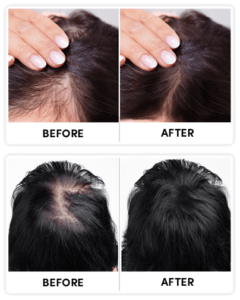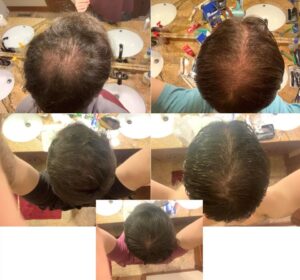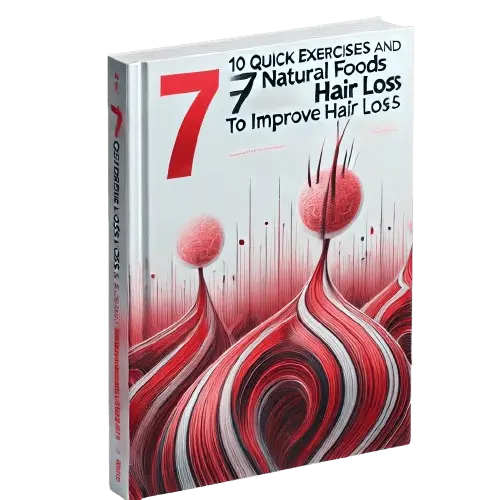Will SARMs Cause Hair Loss, Ostarine 6 Weeks: A Comprehensive Analysis

Getting to Know SARMs and Hair Loss
SARMs, short for selective androgen receptor modulators, have become a hot topic among fitness buffs and athletes. They promise muscle gains and fat loss without the nasty side effects of anabolic steroids, which is why they've caught so much attention. But there's one burning question: Do SARMs lead to hair loss, especially when taking Ostarine for six weeks? If you're thinking about trying SARMs, it's crucial to get the lowdown on this potential side effect. Hair loss can be a real bummer, so understanding how Ostarine and similar substances interact with your body is key to making a smart choice.
So, What Exactly Are SARMs?
SARMs, or selective androgen receptor modulators, are compounds that act like anabolic agents but with fewer androgenic effects. They're designed to zero in on androgen receptors in muscles and bones, potentially boosting muscle mass and bone strength. Unlike steroids, SARMs are praised for having fewer unwanted side effects, making them an attractive option for those looking to up their performance game.
Worries About Hair Loss
Hair loss is a concern for many, linked to everything from genetics to aging and hormonal shifts. For folks eyeing SARMs, the thought of losing hair can be a major turn-off. While SARMs generally have a safer profile than traditional steroids, it's important to know how they might affect your hair. This is especially true for those prone to androgenic alopecia, or male and female pattern baldness.
Why It's Important to Know Ostarine's Effects
Ostarine, also going by MK-2866, is one of the top SARMs out there. Known for building muscle and burning fat, it's often used in cutting cycles. But grasping its potential impact on hair is crucial, especially if you're planning a six-week stint. By diving into the science, user stories, and expert insights, we can get a clearer picture of the hair loss risk and how to tackle it.
Diving Into Ostarine
What's Ostarine All About?
Ostarine, or MK-2866, was developed to fight muscle wasting and osteoporosis. It hooks onto androgen receptors in the body, boosting muscle growth and strength without hitting non-target tissues with androgenic activity. This precision makes Ostarine a favorite among bodybuilders and athletes aiming to enhance their physique and performance without the harsh side effects of steroids.
The Perks of Using Ostarine
Ostarine shines with benefits like more lean muscle, better strength, and quicker recovery. It's often a go-to during cutting phases to maintain muscle while losing fat. Users also report healthier joints and a general uplift in well-being. These perks make it a tempting pick for anyone looking to level up their physical condition safely and effectively.
Top Trichologist: Do This To Your Scalp To Regrow A Full Head Of Hair

Completely natural and dirt cheap way that makes it possible for you to finally regrow all your hair back.
Learn moreCommon Dosage and Cycle Lengths
Typically, Ostarine doses range from 10 to 30 mg per day, with cycles going for about six to eight weeks. Newbies usually start with lower doses to test the waters, while seasoned users might go higher. A six-week cycle is popular for those wanting to see real benefits without dragging the cycle out too long, which could up the risk of side effects.
The Hair Loss Science
Why Does Hair Fall Out?
Hair loss can stem from all sorts of things like genetics, hormonal imbalances, stress, and poor nutrition. Androgenetic alopecia, the most common type, is mainly driven by genetics and hormones, especially dihydrotestosterone (DHT). Getting a handle on these causes is essential when pondering how SARMs like Ostarine might affect hair loss.
Genetic Hair Loss vs. Induced Hair Loss
While genetics play a big role in hair loss, outside factors can make it worse. Induced hair loss happens due to meds, hormonal shifts, or environmental factors. With SARMs, the worry is whether they might speed up hair loss in those genetically inclined or spark shedding in folks who aren't typically at risk.
Androgens and Their Hair Loss Role
Androgens, especially testosterone and its offshoot DHT, are well-known culprits in hair loss. They latch onto androgen receptors in hair follicles, leading to hair thinning and loss. This is why understanding how SARMs, which also target these receptors, might affect hair is crucial for potential users.
Do SARMs Lead to Hair Loss?
How SARMs Might Cause Hair Loss
Unlike anabolic steroids that can spike androgen and DHT levels, SARMs like Ostarine are crafted to bind selectively to muscle and bone receptors. While this targeting is great for muscle growth, the question is whether it accidentally impacts hair follicles. Current evidence suggests Ostarine has a lower chance of causing hair loss compared to traditional steroids, but individual experiences can differ.
Comparing SARMs and Anabolic Steroids
Anabolic steroids are infamous for a slew of side effects, hair loss included, thanks to their conversion to DHT. In contrast, SARMs aren't hormonal and don't convert to DHT, significantly lessening their hair impact compared to steroids. However, they're not entirely free from androgenic effects, which might lead to hair shedding in sensitive folks.
Watch Your Hair Come Back FASTER Than You EVER Dreamed Possible

WITHOUT Expensive Medications, Lasers, or Painful Surgeries!
Watch free special videoUser Stories and Anecdotal Insights
When it comes to SARMs and hair loss, user stories can be gold. Many report no major hair loss with Ostarine, while others see slight shedding that often stops after the cycle. There's a lot of personal variation, with genetics, dosage, and cycle length all playing a part. These stories underscore the need to keep an eye on your body's response during a cycle.
What to Expect from a Six-Week Ostarine Cycle
Outcomes of a Typical Six-Week Cycle
During a six-week Ostarine cycle, users often see muscle mass, strength, and body composition improvements. Fat loss is common, with many enjoying better endurance and faster recovery. These physical boosts are why Ostarine is a hit for both bulking and cutting phases.
Changes in Performance and Physicality
Ostarine's benefits go beyond just muscle growth. Users frequently note higher energy levels, sharper focus, and greater stamina. These perks lead to more effective workouts, especially for athletes pushing their limits. However, it's vital to weigh these benefits against possible side effects, like hair loss.
Keeping an Eye on Side Effects
Watching for side effects during an Ostarine cycle is key to staying safe and minimizing risk. Pay attention to any hair changes or other side effects like mood shifts or fatigue. Keeping a record can help spot patterns and guide decisions about continuing or tweaking the cycle.
Reducing Hair Loss Risks
Ways to Prevent Hair Loss
Worried about hair loss? There are ways to lower the risk. Try using lower doses, shortening the cycle, and taking breaks between cycles. Also, eating a diet rich in hair-friendly vitamins and minerals can be beneficial.
Supplements and Treatments for Hair Health
Certain supplements and treatments can help keep your hair healthy during an Ostarine cycle. Biotin, zinc, and other supplements can strengthen hair follicles. Topical treatments like minoxidil might combat hair loss too. It's wise to chat with a healthcare pro before starting any new supplement or treatment.
Why The Ancient Samurai Warriors Never Lost Their Hair…

guaranteed to work for any men or women out there...
Watch free special videoGetting Professional Advice
Consulting a healthcare professional is a must for anyone considering SARMs. They can offer tailored advice based on your health history and genetic leanings. This step helps you weigh the risks and benefits of Ostarine, providing peace of mind and a clearer path forward.
Conclusion: Balancing Risks and Benefits
Recapping the Essentials
SARMs like Ostarine offer exciting muscle and performance benefits with a lower risk than anabolic steroids. Yet, the hair loss potential, while smaller, isn't zero. Understanding the science, individual differences, and risk-reduction strategies is key for informed choices.
Choosing Wisely
When it comes to Ostarine, weigh the muscle-building benefits against the hair loss risk. By staying informed and taking steps to protect your hair, you can align your choices with your goals and minimize unwanted effects.
Final Thoughts on Ostarine and Hair Loss
Ultimately, deciding to use Ostarine should be rooted in a deep understanding of its effects and your personal health. While the hair loss risk is lower than with steroids, it's still smart to monitor your body's response and act if shedding happens. By doing so, you can enjoy Ostarine's perks while keeping your hair health in check.
Frequently Asked Questions
Can Hair Loss Be Reversed After Stopping SARMs?
Hair loss during a SARM cycle often reverses once you stop. However, the extent of recovery hinges on individual factors like genetics and overall health. Keep an eye on hair regrowth and seek professional advice if you're worried.
Are There SARMs Less Likely to Cause Hair Loss?
Some SARMs are considered less likely to trigger hair loss due to their lower androgenic potential. Ostarine is generally seen as milder, but individual reactions vary. Researching each compound and knowing your sensitivity is key to minimizing risks.
How Can I Tell if Ostarine is Causing Hair Loss?
If you spot more hair shedding or texture changes during an Ostarine cycle, it might be a sign. Tracking these changes against your baseline hair health can help you figure out if Ostarine is the culprit. A healthcare professional can provide further clarity.






